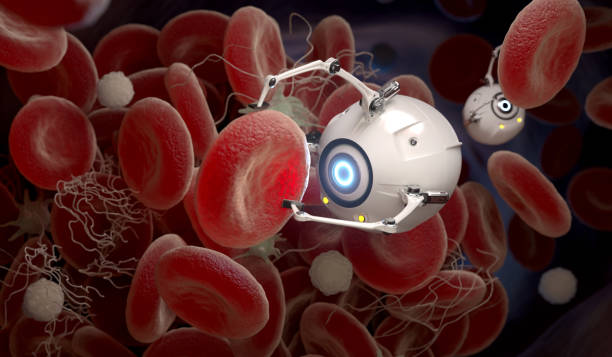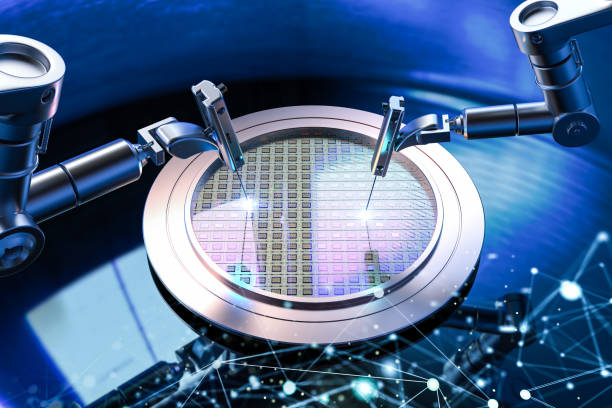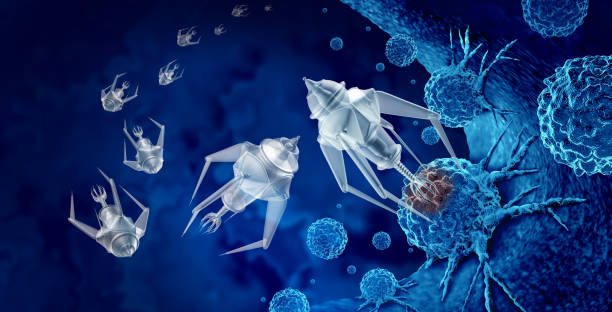What is Nanotechnology?

Imagine a world where diseases are cured from within by microscopic robots, where a single coat of paint can generate solar power, and where materials are a hundred times stronger than steel but as light as plastic. This isn’t the plot of a science fiction movie; it’s the tangible promise of nanotechnology, one of the most exciting and rapidly advancing fields in science and engineering today.
But what exactly is nanotechnology? The term sounds complex, even intimidating, but its core concept is surprisingly straightforward. It is the science of the incredibly small—a realm where the rules of physics and chemistry behave differently, opening up a universe of possibilities.
This comprehensive guide will demystify nanotechnology. We’ll explore its fundamental principles, journey through its applications that are already changing our lives, and look ahead to the revolutionary future it’s building, one atom at a time.
The Heart of the Matter: Just How Small is “Nano”?
To understand nanotechnology, we must first grasp its scale. The prefix “nano” comes from the Greek word for “dwarf.” In scientific terms, it denotes one-billionth of a unit. Therefore, a nanometer (nm) is one-billionth of a meter.
It’s difficult to visualize just how small this is. Let’s use some analogies to put it into perspective:
- A single sheet of paper is about 100,000 nanometers thick.
- A strand of human hair is roughly 80,000 to 100,000 nanometers in diameter.
- A single red blood cell is approximately 7,000 nanometers across.
- A strand of DNA, the blueprint of life, is only about 2.5 nanometers wide.
Nanotechnology is the art and science of manipulating matter at this minuscule level, typically within the range of 1 to 100 nanometers. At this scale, materials can exhibit unique and powerful properties that they don’t possess in their larger, bulk form. For example, a block of gold is yellow, chemically stable, and doesn’t react with much. But when broken down into gold nanoparticles, it can appear red or purple and becomes an excellent catalyst—a substance that speeds up chemical reactions.
This change in properties is the magic key that unlocks the potential of nanotechnology.
“There’s Plenty of Room at the Bottom.” – Richard Feynman, 1959
This famous quote is from a lecture by Nobel Prize-winning physicist Richard Feynman, long considered the visionary father of nanotechnology. He imagined a day when scientists could manipulate individual atoms and molecules, essentially building anything they desired from the ground up. His vision laid the conceptual foundation for the entire field.
The Two Paths of Creation: How Nanotechnology Works
Scientists and engineers generally use two main approaches to create materials and devices at the nanoscale.
1. The Top-Down Approach
Think of this as the sculptor’s method. You start with a large piece of material (like a block of marble) and carve, etch, or mill it down until you are left with the desired nanoscale structure. This is the primary method used to manufacture the microprocessors in our computers and smartphones. Engineers start with a silicon wafer and use sophisticated light-based techniques (photolithography) to etch billions of tiny transistors onto it.
- Example: Creating computer chips by etching circuits onto a silicon wafer.
2. The Bottom-Up Approach
This is the builder’s method, more aligned with Feynman’s original vision. Scientists start with individual atoms or molecules and assemble them, piece by piece, into a more complex structure, much like building with LEGO bricks. This approach allows for incredible precision and the creation of entirely new materials with tailored properties.
- Example: Growing carbon nanotubes, which are single-atom-thick sheets of carbon rolled into a tube. These tubes are incredibly strong, lightweight, and have excellent electrical conductivity.
Both methods are vital to the field of nanotechnology, and often, a combination of the two is used to create the advanced products we use every day.
Nanotechnology in Action: Applications Transforming Our World
While it may sound futuristic, nanotechnology is not just a concept confined to laboratories. It’s already integrated into hundreds of consumer products and industrial processes, making them more efficient, durable, and effective.
Medicine and Healthcare (Nanomedicine)
This is perhaps the most exciting area of nanotechnology application. By operating at the same scale as viruses and proteins, nanomaterials can interact with biological systems in revolutionary ways.
- Targeted Drug Delivery: Conventional chemotherapy floods the entire body with toxic chemicals to kill cancer cells, causing severe side effects. With nanotechnology, drugs can be encapsulated in nanoparticles designed to seek out and bind only to cancer cells, delivering their payload directly to the tumor while leaving healthy cells unharmed.
- Advanced Diagnostics: Nanosensors are being developed to detect diseases like cancer or heart disease at their earliest stages from a single drop of blood. These sensors can identify specific proteins or DNA sequences that act as biomarkers for illness long before symptoms appear.
- Tissue Regeneration: Scientists are using nanoscale scaffolds to provide a structure for new tissue and organs to grow. These nanofiber meshes can guide cells to form functional tissues like bone, cartilage, or even skin, offering hope for regenerative medicine.
Electronics and Computing
The entire digital revolution was built on our ability to shrink transistors. Nanotechnology continues this trend, pushing the boundaries of what’s possible.
- Faster, Smaller Computers: By using nanomaterials like graphene or carbon nanotubes, scientists aim to create transistors that are smaller, faster, and more energy-efficient than current silicon-based ones.
- Brilliant Displays: The vibrant colors in high-end QLED TVs are produced by “quantum dots”—tiny semiconductor nanocrystals that emit light of a specific color depending on their size.
- Flexible Electronics: Nanotechnology enables the creation of conductive inks and ultrathin materials that can be used to print electronic circuits on flexible surfaces, paving the way for roll-up screens, wearable sensors, and smart clothing.
Materials and Manufacturing
Nanotechnology is creating a new generation of “supermaterials” that are stronger, lighter, and more adaptable than ever before.
- Enhanced Strength: Adding carbon nanotubes to materials like plastic or metal can dramatically increase their strength and durability without adding significant weight. This is already used in high-performance bicycle frames, tennis rackets, and aircraft components.
- Self-Cleaning Surfaces: Nanoscale coatings can create surfaces that are extremely water-repellent (hydrophobic) or dirt-repellent (oleophobic). Inspired by the lotus leaf, these coatings cause water to bead up and roll off, taking dirt with it. This technology is used in stain-resistant clothing, self-cleaning windows, and protective car polishes.
- UV Protection: Many modern sunscreens use nanoparticles of zinc oxide or titanium dioxide. In their bulk form, these minerals are white and opaque. But as nanoparticles, they become transparent while remaining highly effective at blocking harmful UV radiation, eliminating the thick white paste of old-fashioned sunscreens.
Environment and Energy
Nanotechnology offers powerful solutions to some of the world’s most pressing environmental and energy challenges.
- Water Purification: Nanofiber membranes can filter water with incredible efficiency, removing viruses, bacteria, and industrial pollutants to provide clean drinking water. Other nanoparticles can be used to neutralize toxic contaminants in groundwater.
- More Efficient Solar Power: Nanomaterials can increase the efficiency of solar cells by capturing more sunlight and converting it into electricity more effectively. Quantum dots are being explored to create solar panels that can absorb a broader spectrum of light.
- Better Batteries: By using nanomaterials in battery electrodes, engineers can greatly increase their surface area, allowing batteries to charge faster, hold more energy, and last longer.
A Summary of Nanotechnology’s Impact Across Sectors
To make these diverse applications easier to understand, here is a table summarizing how nanotechnology is helping people in various fields.
| Sector | Example Application | How It Helps People |
|---|---|---|
| Medicine | Targeted Cancer Therapy | Delivers chemotherapy directly to tumors, reducing side effects and improving treatment effectiveness for patients. |
| Early Disease Detection | Nanosensors in blood tests can find markers for diseases like cancer or Alzheimer’s years earlier, enabling timely intervention. | |
| Electronics | QLED Television Displays | Quantum dots create brighter, more vibrant, and energy-efficient screens, enhancing the consumer viewing experience. |
| Faster Computer Chips | Smaller, more efficient transistors lead to more powerful and compact devices, from smartphones to supercomputers. | |
| Materials | Carbon Nanotube Composites | Creates ultralight, super-strong materials for sports equipment, vehicles, and aircraft, improving performance and fuel efficiency. |
| Stain-Resistant Fabrics | Nanocoatings prevent liquids and dirt from penetrating fibers, making clothes and furniture easier to clean and longer-lasting. | |
| Energy | High-Efficiency Solar Cells | Nanotechnology improves the ability of solar panels to convert sunlight into electricity, making renewable energy more affordable and accessible. |
| Environment | Water Filtration Systems | Nanoporous filters effectively remove contaminants, providing safe, clean drinking water for communities around the world. |
| Consumer Goods | Transparent Sunscreen | Zinc oxide nanoparticles provide powerful UV protection without leaving a white residue, encouraging more frequent use and reducing skin cancer risk. |
The Challenges and Ethical Horizon
Like any powerful technology, nanotechnology is not without its challenges and ethical questions. As we design materials at the atomic level, we must proceed with caution and foresight.
- Environmental and Health Risks: What happens when these tiny nanoparticles enter the environment or the human body? Scientists are rigorously studying the long-term effects of nanomaterials to ensure they are safe and do not accumulate in ecosystems or cause harm to human health.
- Economic Disruption: The widespread adoption of nanotechnology could disrupt existing industries, leading to job displacement. It also raises questions about accessibility—will its benefits be available to everyone, or will it widen the gap between developed and developing nations?
- Privacy and Security: The potential for microscopic, undetectable surveillance devices (nanosensors) raises serious privacy concerns that societies will need to address through regulation and policy.
Responsible development, transparent research, and public dialogue are essential to navigating these challenges and ensuring that nanotechnology benefits all of humanity.
“The pace of progress in nanotechnology is breathtaking. The opportunities it presents for medicine, manufacturing, and communication are matched only by the need for wisdom in its application.” – Dr. Sarah Thompson, Fictional Nanotechnology Expert
The Future is Small: What’s Next for Nanotechnology?
We are still in the early days of the nano revolution. The progress we’ve seen so far is just a glimpse of what’s to come. In the coming decades, nanotechnology could lead to:
- Nanobots: Fleets of microscopic robots could navigate our bloodstream to perform surgery from the inside, repair damaged cells, and hunt down pathogens.
- Atomically Precise Manufacturing: The ability to build complex products atom by atom could eliminate waste, creating a new era of clean, ultra-efficient manufacturing.
- A Solution to Climate Change: Nanotechnology could enable breakthroughs in carbon capture, ultra-efficient energy storage, and cheap, abundant solar power, providing the tools we need to build a sustainable future.
Conclusion: An Invisible Revolution
Nanotechnology is more than just a buzzword; it is a fundamental shift in our ability to engineer the world around us. By mastering the building blocks of matter, we are unlocking a future that is healthier, more sustainable, and more efficient. From the sunscreen on your skin to the smartphone in your pocket, this invisible revolution is already underway.
The journey into the nano-world is a journey of immense potential. As we continue to explore the “plenty of room at the bottom,” we are not just building smaller things—we are building a bigger, brighter future for everyone.



